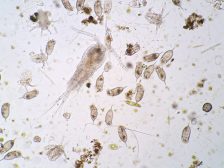Definition
noun
A form of dysentery in which the causative agent is an amoeba, particularly Entamoeba histolytica
Supplement
Amoebic dysentery is a form of dysentery caused by the infection with the amoeba, particularly Entamoeba histolytica. Dysentery is a pathogenic condition wherein the large intestine became inflamed due to the presence of the pathogen that activates the inflammatory response of the host. Amoebic dysentery causes tissue damage to the intestinal lining and therefore impairs nutrient and water absorption. The tissue damage is similar appearance to that of ulcerative colitis. The amoeba can be dormant for years within the host and therefore proper treatment is essential to prevent the risk of fatal complications.
The amoeba may reach the intestines through the host ingesting contaminated water, food, and objects. This amoeba may form a cyst together with the other amoebae during fecal discharge. The cyst may survive the external environment and therefore increases the chances of infecting another host. When ingested, the cyst is capable of withstanding the digestive acid of the stomach, and therefore would reach the intestine, which is the site of infection. The cyst upon reaching the intestine releases the amoebae. The amoebae, then, burrow into the intestinal wall to begin the cycle anew.
The symptoms of amoebic dysentery includes explosive diarrhea, foul-smelling stool with blood and/or mucus, colitis, flatulence, dehydration, abdominal cramps, weight loss, anemia, fatigue, and moderate fever.
Variant(s):
- amebic dysentery
See also:







